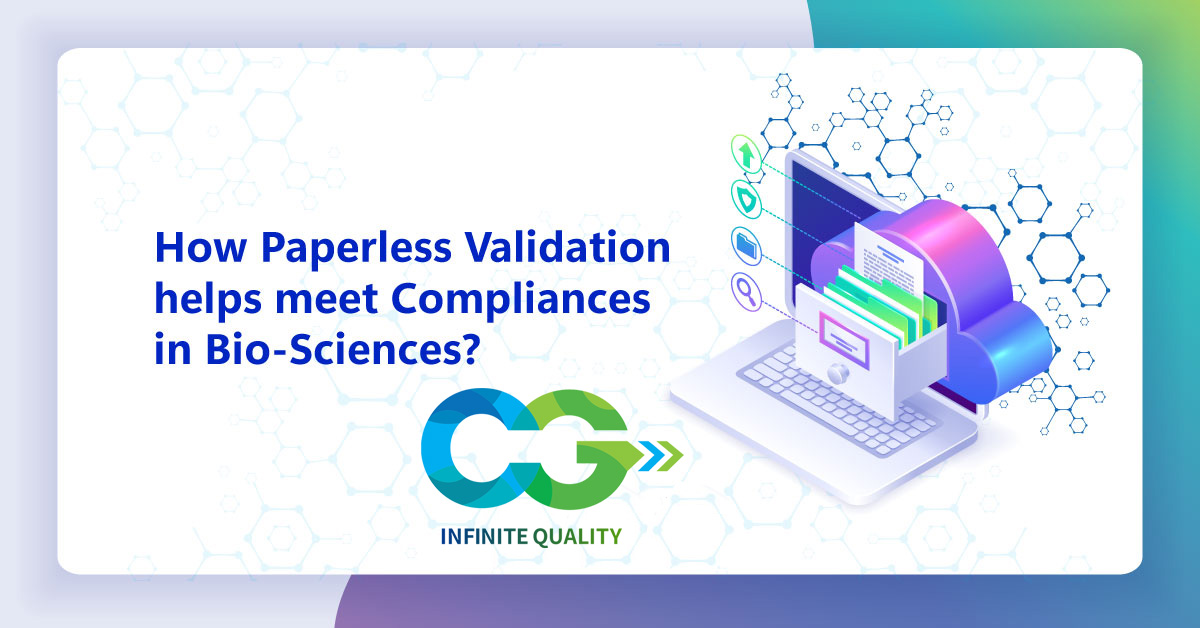How Paperless Validation helps meet Compliances in Bio-Sciences ?

Article Context:
Bird-brained. Has anyone ever been called that? It’s definitely not a compliment. However, a bird’s eye view is considered good, like being in the crow’s nest or traveling straight as the crow flies. Pretty as a peacock? That’s good too. As I look out my window, the bird songs that abound are enjoyable, and I’m no ornithologist.
What do birds have to do with Paperless Validation for the Bio-Sciences? The bio-sciences are all about saving lives, so there’s definitely a connection here. Paper comes from trees, and the more we can go paperless, the more habitats for birds we can save!
For those in the bio-sciences, I applaud you. I also applaud those who have created software that allows us to go paperless across many industries. Let’s take a look at some mechanisms that allow for Paperless Validation.
The fundamentals of Good Documentation Practice (GDP) are essential in the industry. Data Integrity, arguably the most discussed topic, is the bedrock of GDP in any form of record – paper or electronic. ALCOA+ (a mnemonic) is a set of principles that ensures data integrity.
ALCOA was introduced by and is still being used by the FDA. ALCOA is an acronym for the original five principles of data integrity: Attributable, Legible, Contemporaneous, Original, and Accurate. The original ALCOA principles have since been updated to ALCOA+, adding the following four principles: Complete, Consistent, Enduring, and Available.
To create a more efficient and leaner means while remaining compliant to the regulatory requirement and expectations, the industry has evolved into documentation that has become more complex. The struggle to generate and maintain complex documentation, for example, User Requirement Specifications (URS), Quality Risk Assessment (QRA), System Impact Assessment (SIA), Commissioning and Qualification (C&Q) Protocols, Requirement Traceability Matrix (RTM), etc. is very real. Amongst the struggles include the following:
- Document generation is intensive
- Documents are of different quality and formats
- Adherence to corporate and regulatory standards
- Ensuring consistency and accuracy of repeated data across different documents.
- Data integrity
- Management of change
What is Paperless Validation?
Simply put, it’s a way of ensuring things reach Compliance electronically. This includes software, utilities, equipment, spreadsheets, and processes. It also includes a series of tests in Life Science companies to comply with regulatory bodies such as the FDA, EMA, WHO, and more.
As an example, you are tasked with creating a test plan. The first instinct is to dive into your “stash” to find the supposedly best version of a similar system with an existing test plan. The downfall of this approach is that the document generated could be of different quality and format from another person within the same organization. The harmonization of the content, look and feel of the document immediately becomes a challenge. Unlike a paper-based approach, the document templates, approval templates, test scripts with SME-approved acceptance criteria, etc., could be controlled (audit trail, version-controlled, and access-controlled) using a document-centric paperless validation system.
With a paper-based approach, the reviewers typically want to have the draft document printed out, commented on, returned to the author for incorporation, and then repeated another round for wet-signature pre-approval. Cumulatively, the amount of wasted paper, the time taken to track the movement of documents in various stages, including the actual physical effort to move them and chase down the reviewers/approvers, translates into resources (time and money) wasted – a necessary waste in a paper-based approach.
With a 21 CFR Part 11 compliant paperless solution, the review and pre-approval process could be done electronically, including tracking for project management – immediately providing tangible savings!
Lastly, here are some key considerations and questions for thought when selecting an electronic/paperless validation solution:
- How compliant is the paperless validation solution to FDA 21 CFR Part 11?
- What is the vendor experience in a GMP-regulated environment?
- What is the limitation in its scalability across multiple sites?
- Does it have review and approval functionality built-in?
- Does the paperless validation solution have the capability of progress reporting in real-time, i.e., document status against the project, system owner, etc.?
- Does the paperless validation solution have the capability to harmonize the approach, and what is the control over it?
- Does it have an electronic test execution process?
- Will it offer validation storage, search, and retrieval?
- Does it auto-generate validation summary reports?
And there you go, more ways to save our trees and birds by moving from paper-based validation to electronic. Tree-huggers and bird-lovers unite!